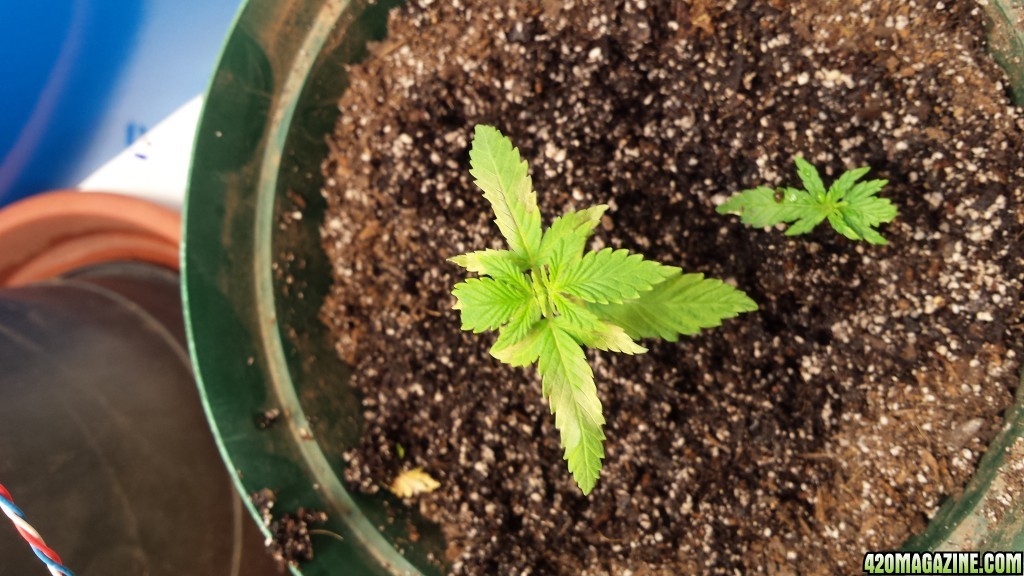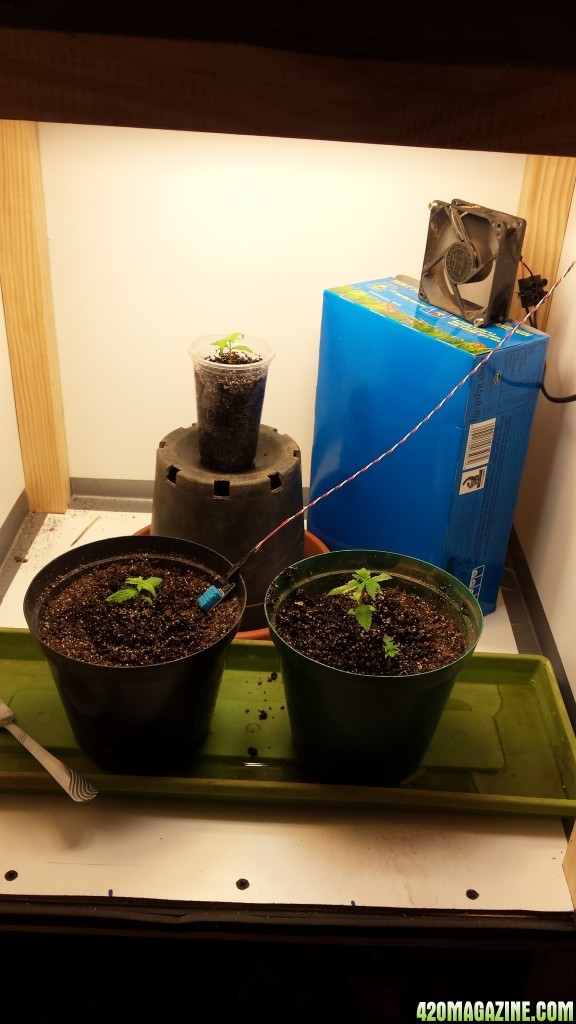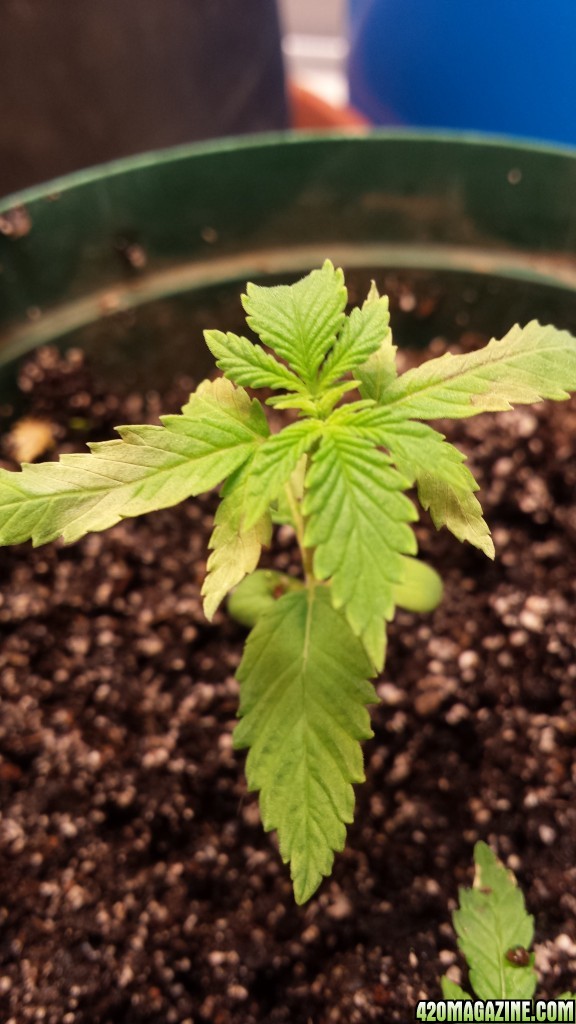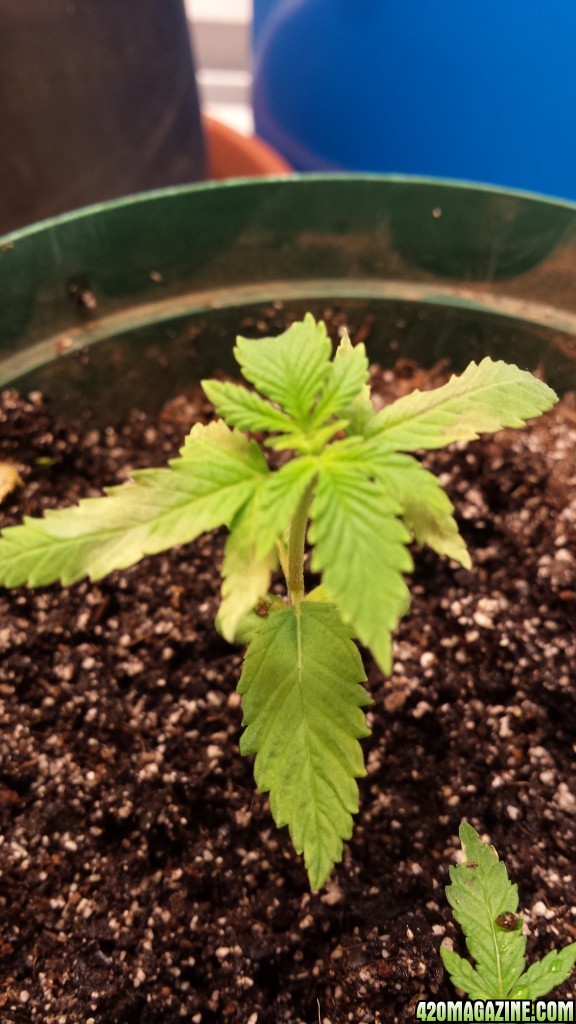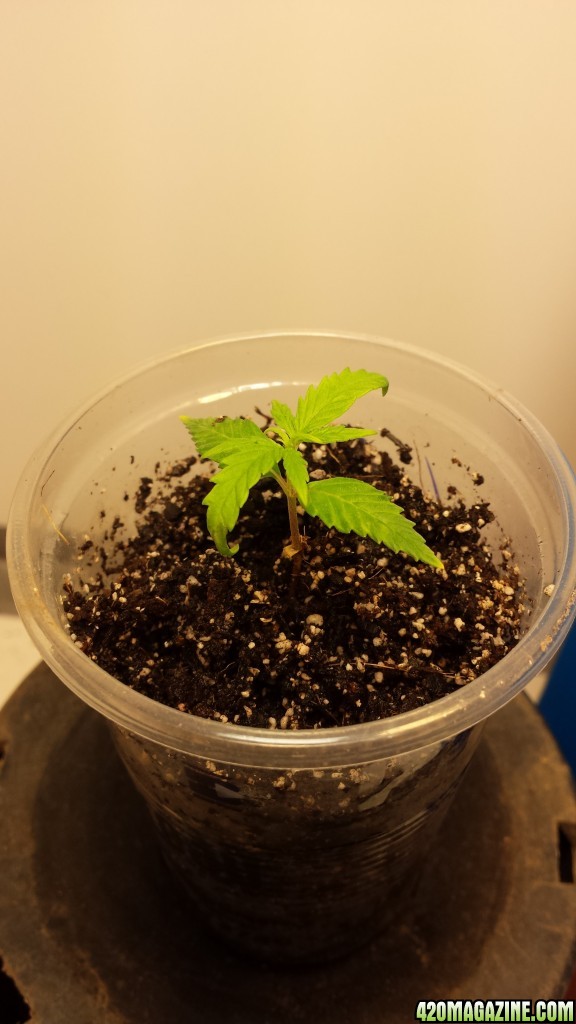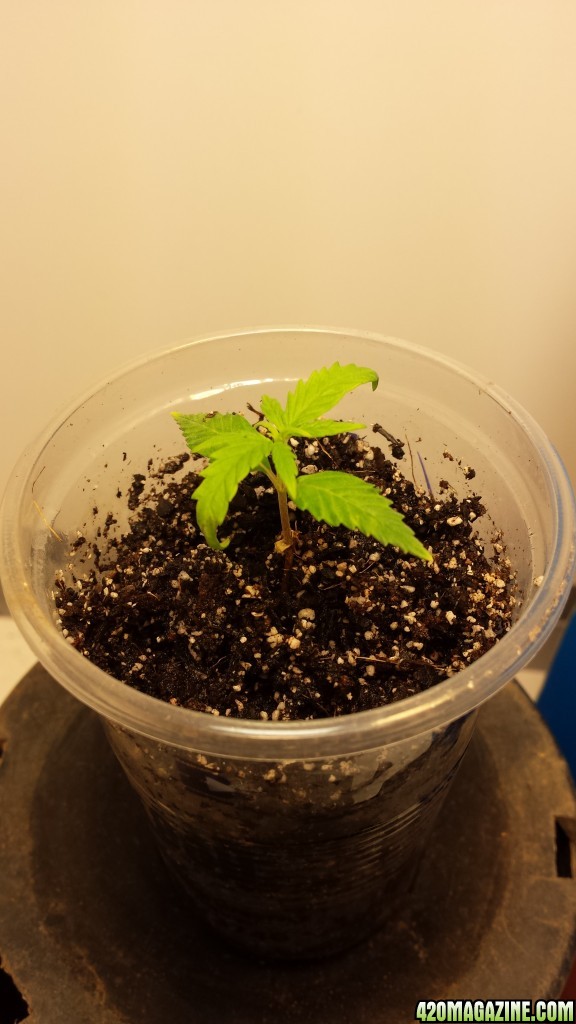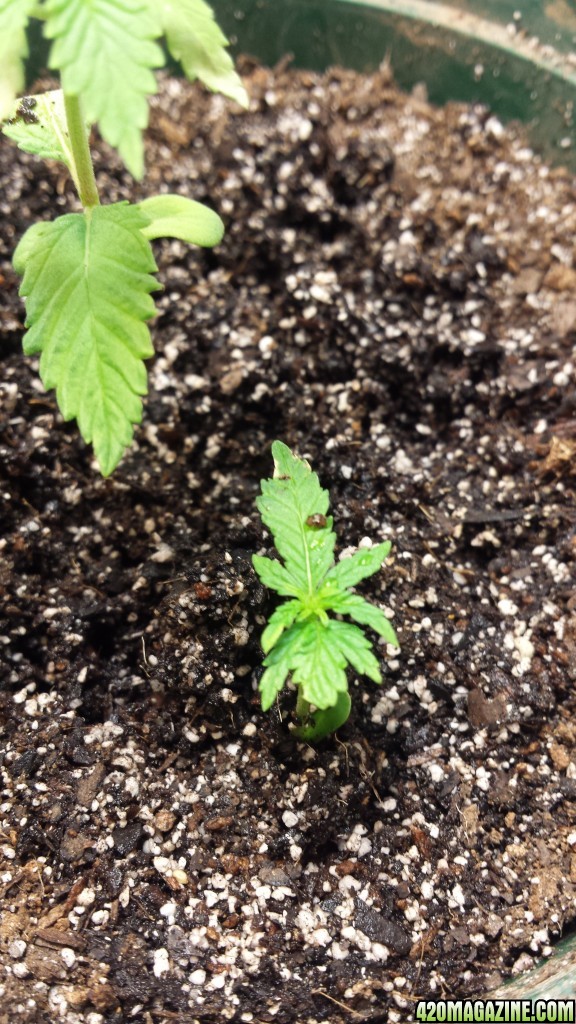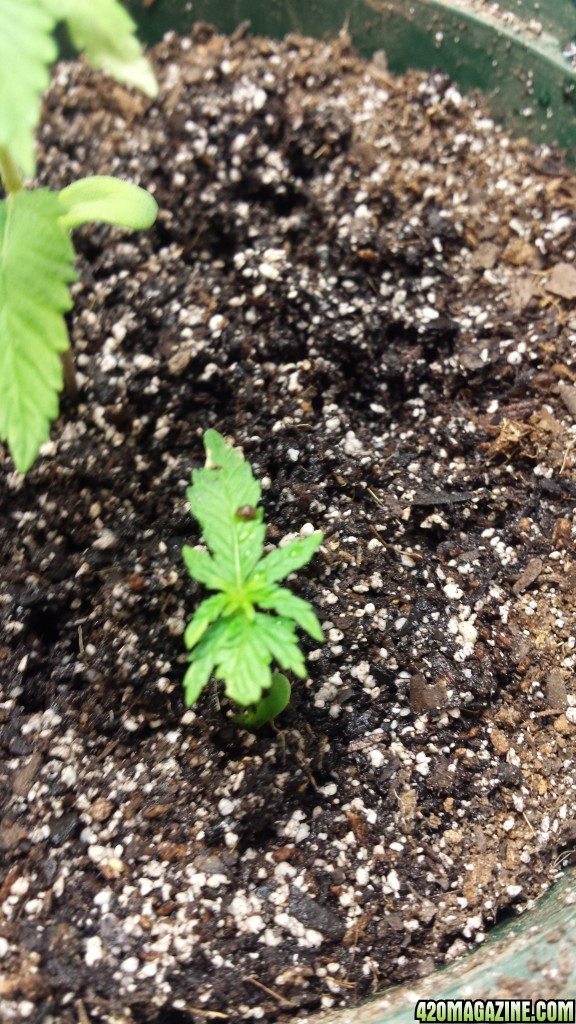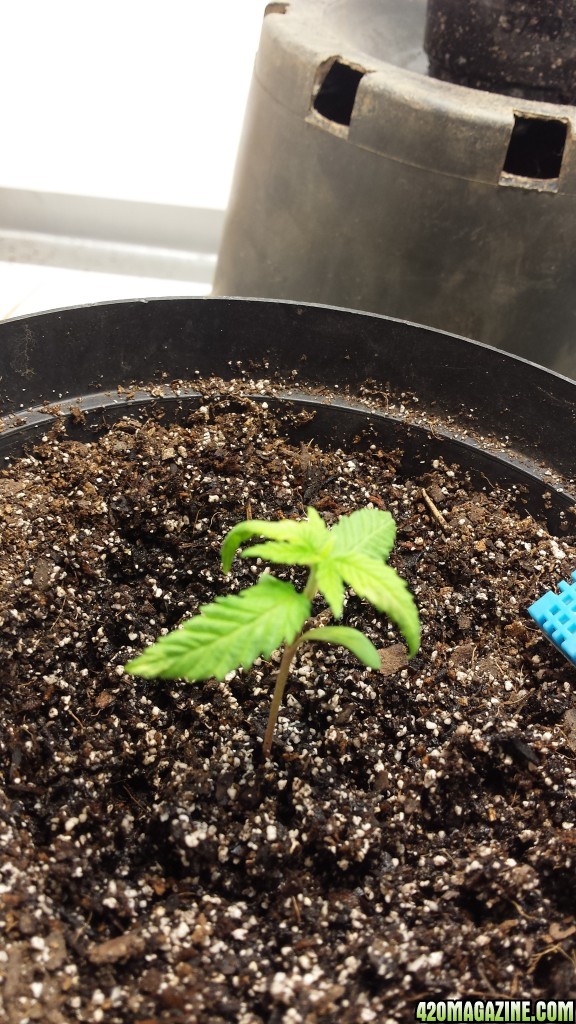let me change my diagnosis...
let's call this improper watering. And yes, the yellowing is coming from this.
Here is what is happening:
You have put two of your plants in larger containers. Note that the plant in the smaller container actually has better color. There is a reason for this.
Back to the other two though... you are watering just one part of the container, right down the middle, till run off. Since you are not wetting the outside edges, the plant has no desire (or ability) to grow laterally, and all of your roots are going exactly where you are telling them to go... they are chasing the water straight down to the bottom.
Normally a plant would find that the entire soil mass in the container was wet and full of nutrition, and you would develop two distinct sets of roots, top and bottom. Each of these root areas act and look different than the other... the top roots form a fine mesh that spreads out sideways to extract all of the nutrients from the soil. These roots also take up a large amount of water immediately after a rain (or a watering) and are an important part of the plant's nutritional system. The second set of roots are called tap and feeder roots and they go deep, seeking out the deepest water, protecting the plant from drought. These roots suck up large amounts of water into the plant, and it is the suction that they create that draws all of the water (and nutrients) out of the soil.
Your plant has not been able to develop these two root zones. The top one has not developed because the top half of your soil, especially around the edges, doesn't even get wet and can't support growth. To survive, your plant has done what it can and sent the roots after the water. It is now very inefficient in the root department though, and your plant is unable to keep up with your watering. You are faithfully watering every time the top gets crusty... so you are doing it pretty often... right down the middle. Since the plant is unable to drain the water that was already down there sitting at the bottom, refilling the bottom doesn't take very much water and as soon as the bottom half of the container becomes saturated, it drains out of the bottom. Because you keep coming along and adding to the water table every few days, the roots never dry out at the very bottom, although the top dries out quite well.
You can still save this plant, but you need to totally change how you are doing this. First of all, the containers are too large... you easily lost control of the water because of it. Next time, successively up-pot into larger containers, waiting for the roots to develop in each smaller size before moving up. For now with these two big plants, it is time to change your watering method.
I want you to water your entire container. Actually try to not put water down the middle. Try instead to make the outside edges of these containers the wettest spots. Neglect the center; and trust me that it will get plenty. Water the outside edges slowly, attempting to get as much water into this container as you possibly can. When you are done, putting more water anywhere, edges, center... it will run out of the bottom. This soil will be completely saturated.
Now the water table can work as designed. The plants will slowly start to use this water up, and the water table will begin to fall inside the container. Your task is to let it fall. Stop being concerned about the dryness of the surface. Don't even be concerned with the dryness down as far as you can push your finger. Let that water table fall.
As sick as your plant is, it may take a week to use up all the water in that container. A week is too long to let the top roots stay dry, so while you are waiting for the water table to fall ALL THE WAY TO THE BOTTOM, you are going to have to give the top roots something to live for. After 5 days, using no more than a quart, attempt again to make the outside edges the wettest spots at the top of the container. This is NOT a complete watering... all you are doing here is giving CPR to the top roots, while you wait for the water table to fall.
Continue waiting... I am guessing about a week. Lift your containers up. If you can feel ANY water weight as compared to a similar container of DRY soil, continue to wait. If you have a moisture meter, stick it in there all the way to the bottom, and figure out where that wet/dry line is. Watch it fall. When the lift method tells you there is no water left... or the moisture meter shows you that the wet/dry line is in the last inch of container, you are very close.
At the end of the wet/dry cycle, your plants will first get really happy and will lift every leaf up to the light. They like getting oxygen to their lower roots... they like it a lot. As they get to the watering point, the very lowest leaves will begin to droop. You will know this is close, because the lift method has told you there must not be much water in there... the moisture meter says you are close... and then the plants will let you know with that droop and a puff of scent, that they have a concern. It is now time to water.
When you water this third time, do it with gusto. Once again fill that container up as full as it can get, and then wait. You will notice that every time you complete this wet/dry cycle, the plant will have gotten stronger, and the cycle will shorten each time. When the cycle shortens to less than 48 hours in a couple of weeks of this, you will probably be considering up-potting once again.
Tease out those roots... entice them to grow where you want them. These are weeds... they need to have a bit of stress to thrive. Watering properly in a container however is paramount... but once you have the concept down as to what is happening with that water table, it becomes easy.
Good luck, and if you want to read more on this, I have a sticky thread that a lot of people like. The link is down below on my signature lines.
